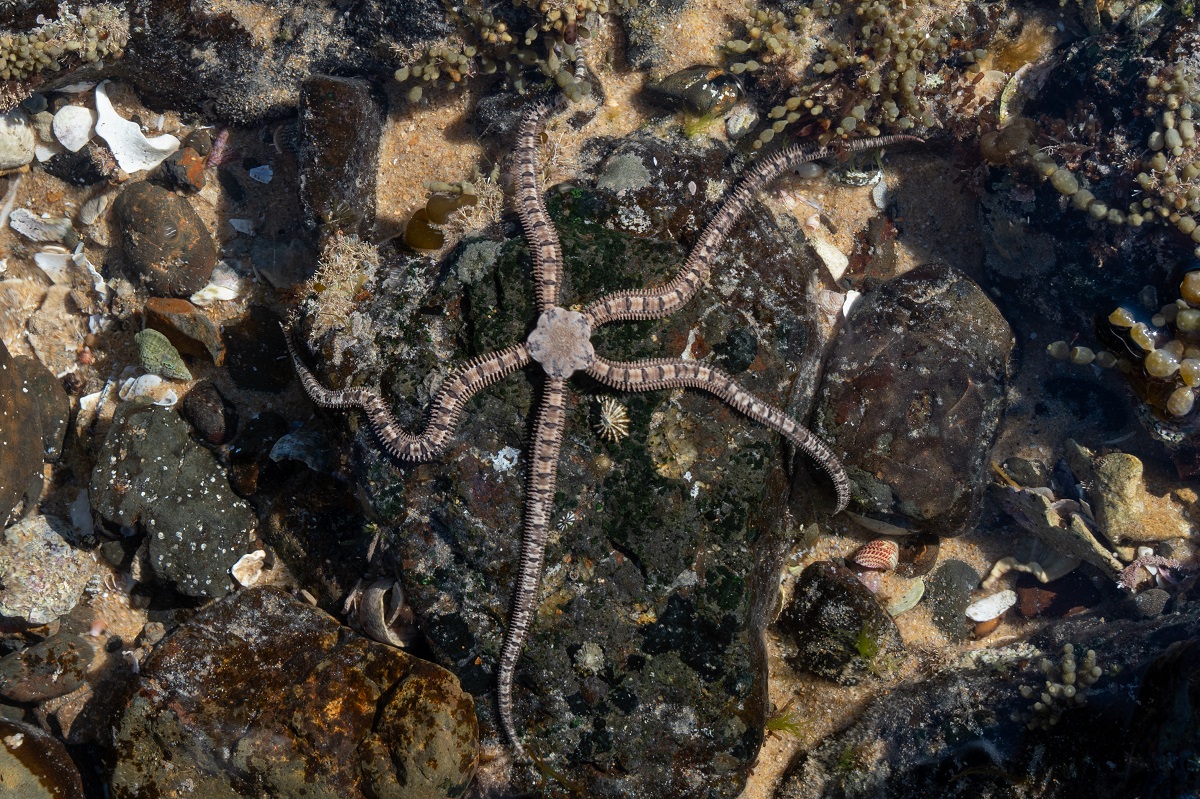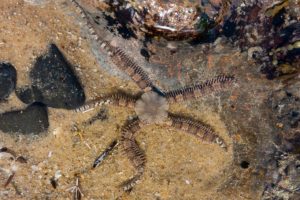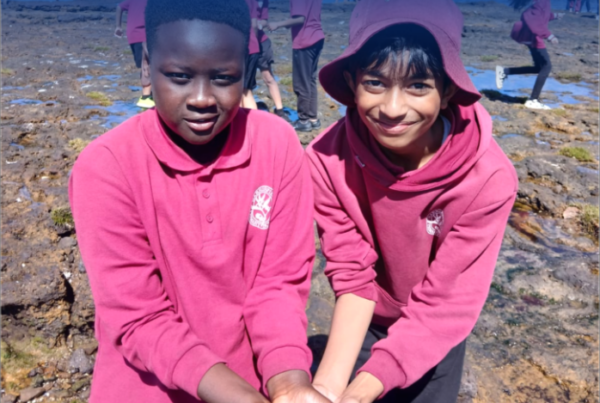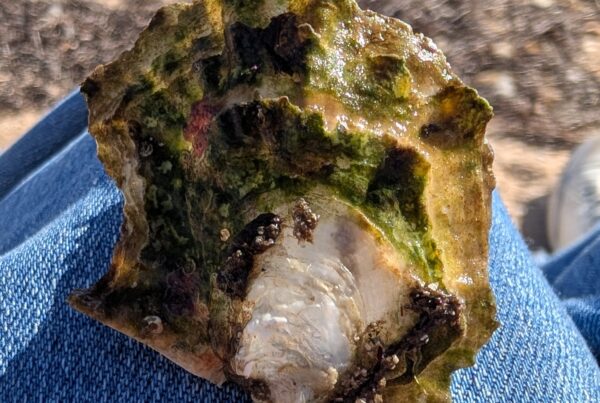The scientific name for this creature is Ophionereis schayeri which tells us little about the animal. However, its common names are much more descriptive. Do you know either of its two common names? Click to learn more.
This sea star belongs to a group known as either brittle stars or snake stars. Why these names? The name snake star refers to the way the arms move, which is like a snake, curling back and forth. Most sea stars move using the hundreds of tubular feet on the underside of their arms, appearing to glide over the surface as they move. Rather than glide, the snake star pushes itself along using its arms, not its tubular feet. One arm points the way, the next two push the animal along and the last two follow, not aiding the movement. Short blunt spines on the arms help grip the sand as the animal pushes itself along.
The name brittle star refers to the unusual behaviour of these brittle stars. When the animal feels threatened it will detach or throw off the tips of its arms. This can even happen while you cradle the animal in your hand. The detached arms continue to wriggle, distracting would-be predators, while the animal makes its escape. The wriggling arm can also produce a green glow, useful for attracting the attention of predators at night. While the loss of an arm seems to be very drastic, the brittle star can regrow the lost portion of its arm. Look at the tips of the arms on the brittle star below, you can see the tips in various stages of regeneration.
The preferred habitat of the brittle star is under rocks in the intertidal area. It is native to Australia and is found along the coast from New South Wales to Western Australia, including Tasmania. It is one of our largest brittle stars with legs reaching up to 15 centimetres long.
Watch a Brittle Star ‘walk’ as it looks for shelter amongst the rocks! These creatures are simply amazing!!

If you would like to join us on a rockpool ramble, whether that be online during this challenging quarantine time, or planning for future excursions please do not hesitate to contact the Education Team at the Dolphin Research Institute at education@dolphinresearch.org.au





